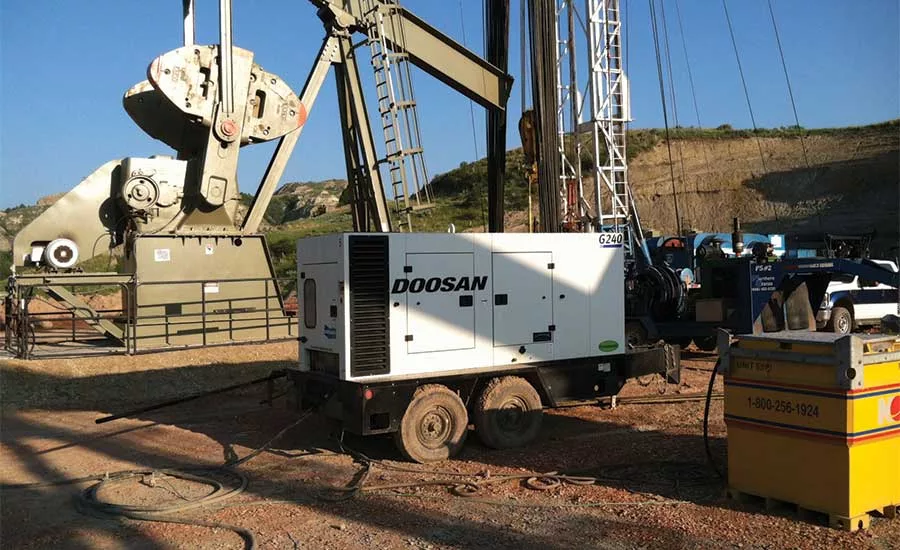Tips for Safe Mobile Generator Operation on Drilling Jobs

Operators should make sure generators are on as level a spot as possible, and only move them — even a few feet — with the help of a proper vehicle.
Source: Doosan Portable Power
Safety is paramount on a drilling site and, without diligence, accidents can happen.
Following these guidelines can help minimize the risks associated with mobile generator operation, reducing the potential for accidents and injuries, and ensuring a safer jobsite for all.
Mechanical Hazards
Mechanical hazards — rotating fans, moving belts — are generally easy to spot and can result in physical harm to an operator, such as burns, abrasions or lacerations. Most mechanical-related generator accidents can be prevented by avoiding dangerous situations altogether.
For instance, one should never work inside the machine while it’s operating. This exposes an operator to moving parts, but also to damaging noise levels and burn risks. Generators produce high internal temperatures during operation, creating the potential for burns if an operator encounters hot components. Operators should allow time for the generator to cool before starting daily maintenance and always wear proper protective gear.
Refueling the machine is another action that should only be performed once the generator has cooled. This eliminates the chance for fuel to come in contact with a hot surface that could cause the flammable vapors to ignite.
Operators should also become familiar with their machine’s parts, taking note of warning decals and safety guards, and follow the manufacturer’s recommendations for safe operation.
Mobile Risks
One of the great advantages of mobile equipment is the ease of transport. But the ability to move the equipment on a jobsite can lead to unsafe actions, such as moving the machine by hand rather than a towing vehicle in an effort to save time.
Operators or other workers should never attempt to move a mobile generator or lift the draw bar by hand to connect the unit to a ball hitch. This poses a personal injury threat, but it also creates an unsafe situation in which the machine can’t be controlled by hand, allowing it to potentially roll backward or downhill.
A jack stand should be used to lift the draw bar and a proper vehicle should be used to move the generator around the jobsite, even if it’s only a couple feet. To prevent rolling, wheel chocks are recommended, regardless of surface conditions. As an added guard against rolling, generators should be positioned on as flat of surface as possible. Inclined surfaces also have operational drawbacks. Generators parked on a steep incline may experience performance issues as a result of oil not reaching the engine and fuel not reaching the fuel pump.
Brains of the Operation
Mobile generators are often equipped with enhanced functionality to minimize the inherent dangers of the equipment. The generator control panel is one area designed with that safety functionality.
As generator technology has advanced, so too has control panel technology. The control panel allows an operator to monitor machine function and receive warning indications should the generator begin to operate outside of safe limits. In the past, warning indicators were delivered in the form of lights and number codes. Current models have control panel warnings displayed in text form to tell the operator what malfunction is occurring and possibly how to remedy the issue. If a control panel warning is not addressed by an operator, the machine will enter protection mode and shut down, preventing the potential for a catastrophic machine failure that could result in an explosion.
Despite the obvious hazards, several safety mechanisms are built into most mobile generators through features that don’t allow the machine to operate outside of certain parameters. For instance, if a generator is overloaded, it will trip and shut down to protect the machine from being damaged.
Likewise, if a generator engine experiences a problem, the machine will shut down to prevent complete engine failure and any dangerous scenarios that would occur as a result. But perhaps the most important safety feature on most mobile generators is an emergency stop button that immediately terminates operation.
Looking for a reprint of this article?
From high-res PDFs to custom plaques, order your copy today!




